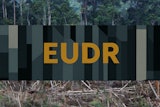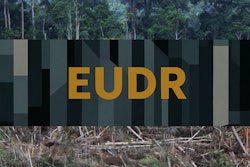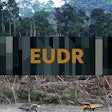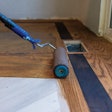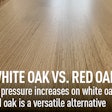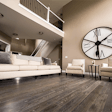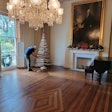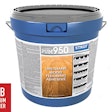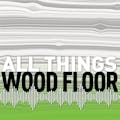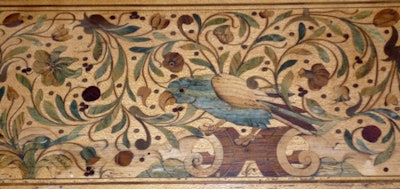
The last few weeks have provided information about pulling pigments from fungus with the intent to use them to dye products, eventually in industrial applications. (You can click these links to see Part 1, Part 2 and Part 3 of our fungus series.) We’ll end this series with some art, just to enjoy the natural colors this technique offers.
First, below is the pulpit of St. Mary’s Church by artist Joachim Mekelenborg in Griefswald, Germany, circa 1587, showing a parrot in flower tendrils over the pulpit door. Chlorociboria was used on a light maple base (photo by Hans Michaelsen):
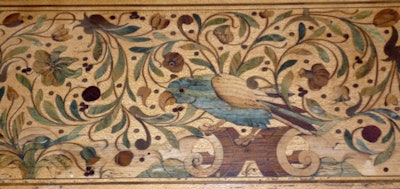
This bowl features heavy saturation versions of the red stain of Scytalidium cuboideum, the yellow stain of Scytalidium ganodermophthorum and blue-green stain of Chlorociboria spp. on soft maple with zone lines and white rot. Zone lines were induced in a log using airborne fungi, and the pigments were harvested from fungi and applied directly in liquid form:

This knobcone pine bowl features the red stain of Scytalidium cuboideum, yellow stain of Scytalidium ganodermophthorum and blue-green stain of Chlorociboria spp. Pigments were harvested from the fungi and applied in liquid form:

Here we have yellow pigment from Scytalidium ganodermophthorum on soft maple with zone lines. Zone lines were induced in the log using airborne fungi and the pigment was harvested from S. ganodermophthorum and applied in liquid form:











